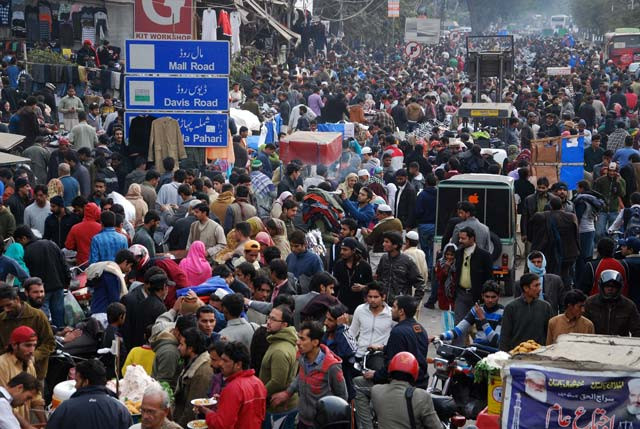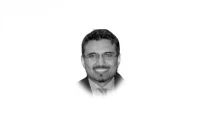Lahore — world’s largest city in 2050
Lahore has grown haphazardly in all directions as the city that was once confined within 13 gates

PHOTO: RIAZ AHMED/EXPRESS
Although there is no universal definition of a megacity, typically the population of 10 million defines the threshold, where a city becomes a megacity. A few years ago, the University of Toronto’s Global Cities Institute projected the world’s population and identified the world’s largest cities in 2050. Using the UN’s World Urbanisation Prospects data, the study concluded that Mumbai, with a population of 42.40 million in 2050 would be the world’s largest city. Karachi also secured 8th position in this list, with a projected 31.7 million population, but Lahore was nowhere to be found. Estimates at the time showed that Lahore would cross the 10 million-threshold by 2025, which obviously was grossly underestimated given that Lahore experienced a growth rate of 4.14% over the last 19 years.
Even more frightening is the fact that, unlike other megacities in the world, Lahore has grown haphazardly in all directions and the city that was once confined within 13 gates, now has an ever-expanding boundary. This phenomenon of unplanned incremental urban development, relatively low-density population and urban settlements eating out agricultural lands is typically known as urban sprawl. The world’s largest city, with an uncontrolled urban sprawl, is a nightmare for policymakers.
6th census findings: 207 million and counting
But what has caused this urban sprawl over the past few decades and what is so bad about it? Population pressure, better employment prospects and superior health and education services in a city like Lahore obviously have a role to play here, but these can’t solely be blamed for a growth rate, which is almost double the national average. Significant infrastructure investments in Lahore, turning it into the most-modern Pakistani city, have lured many to move here. Furthermore, highways, expressways and ring roads are known to be a major catalyst for urban sprawl, resulting in rapid outgrowth of cities. Besides the network of highways laid in the last few years, high prices of land, flawed land-use policies with poor compliance and virtually unregulated private residential developments have expanded Lahore enormously. This in turn has resulted in more traffic congestion, further escalation in land prices and higher cost to deliver services.
If urban sprawl is not desired, how instead should cities grow? Urban planners believe that compact cities are a better model to grow for megacities. Compact cities mean that people live closer to each other, typically with high-rise buildings. This vertical growth with high population density results in many benefits such as shorter distances and lower transportation costs, preservation of green spaces, reduced carbon emissions and high efficiency of infrastructure investments. There is no surprise that in the US per capita infrastructure costs in most sprawled cities is about 50% higher than those in least sprawled cities, while the risk of being killed in a car accident is 2-5 times more in the former category.
Moreover, the often-quoted notion of ‘cities as engines of economic growth’ is not always true. The relationship between economic growth and urbanisation is mostly evident in compact cities and smarter communities.
So what can be done about it? A measured response from the Punjab government should include a three-pronged strategy: a) discourage urban sprawl and promote vertical growth through targeted land-use and building regulations; b) prepare for the forthcoming population explosion through investment in urban services and affordable housing and c) dilute the pressure on Lahore through more equitable infrastructure investments across Punjab.
Karachi up top, but not by much
An immediate response is needed from Punjab to manage this challenge, or else no matter how many metros we make, the growth of the city will always be outpacing the metro reach, begging for even more investments.
Published in The Express Tribune, September 6th, 2017.
Like Opinion & Editorial on Facebook, follow @ETOpEd on Twitter to receive all updates on all our daily pieces.
















COMMENTS
Comments are moderated and generally will be posted if they are on-topic and not abusive.
For more information, please see our Comments FAQ